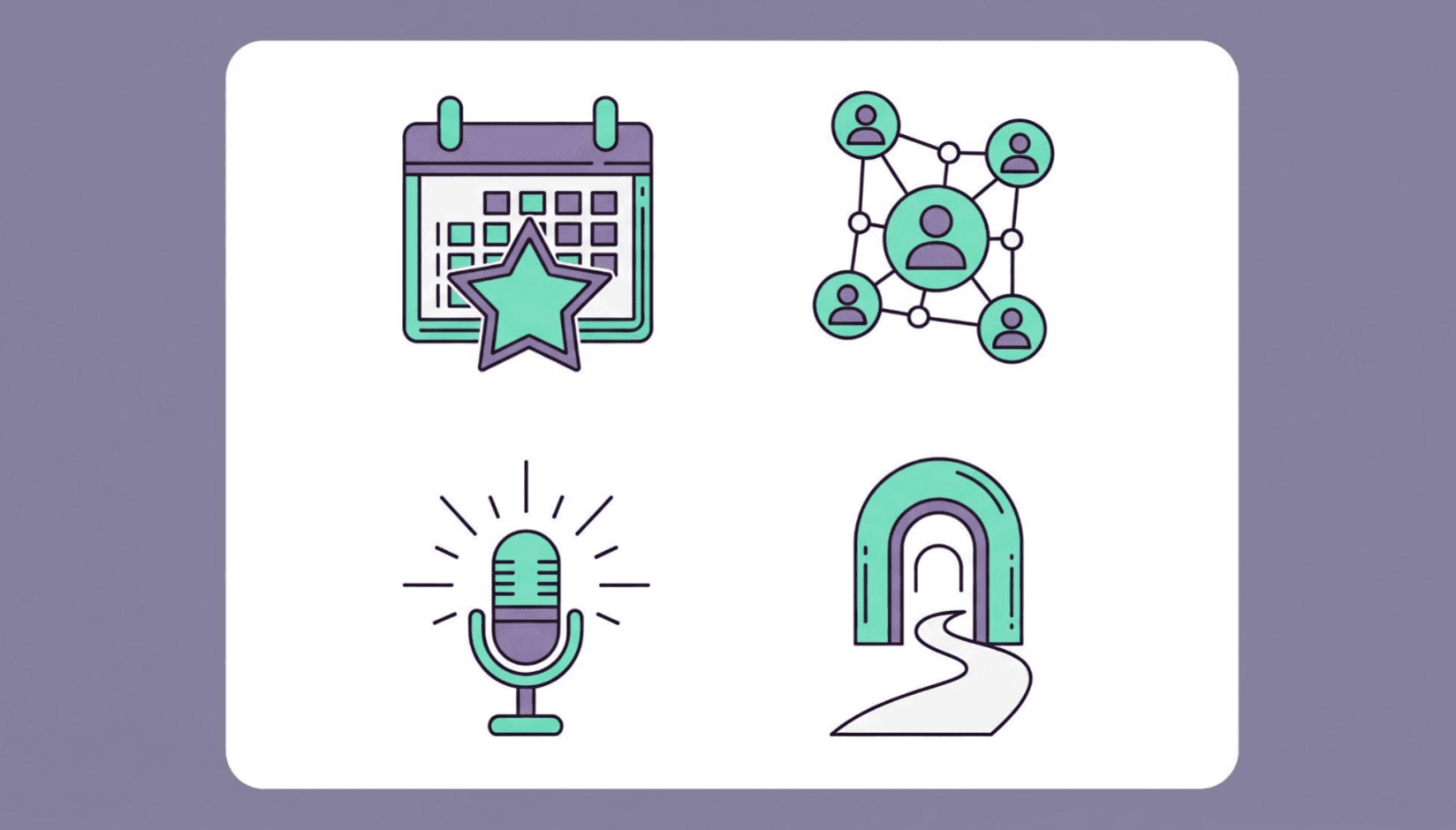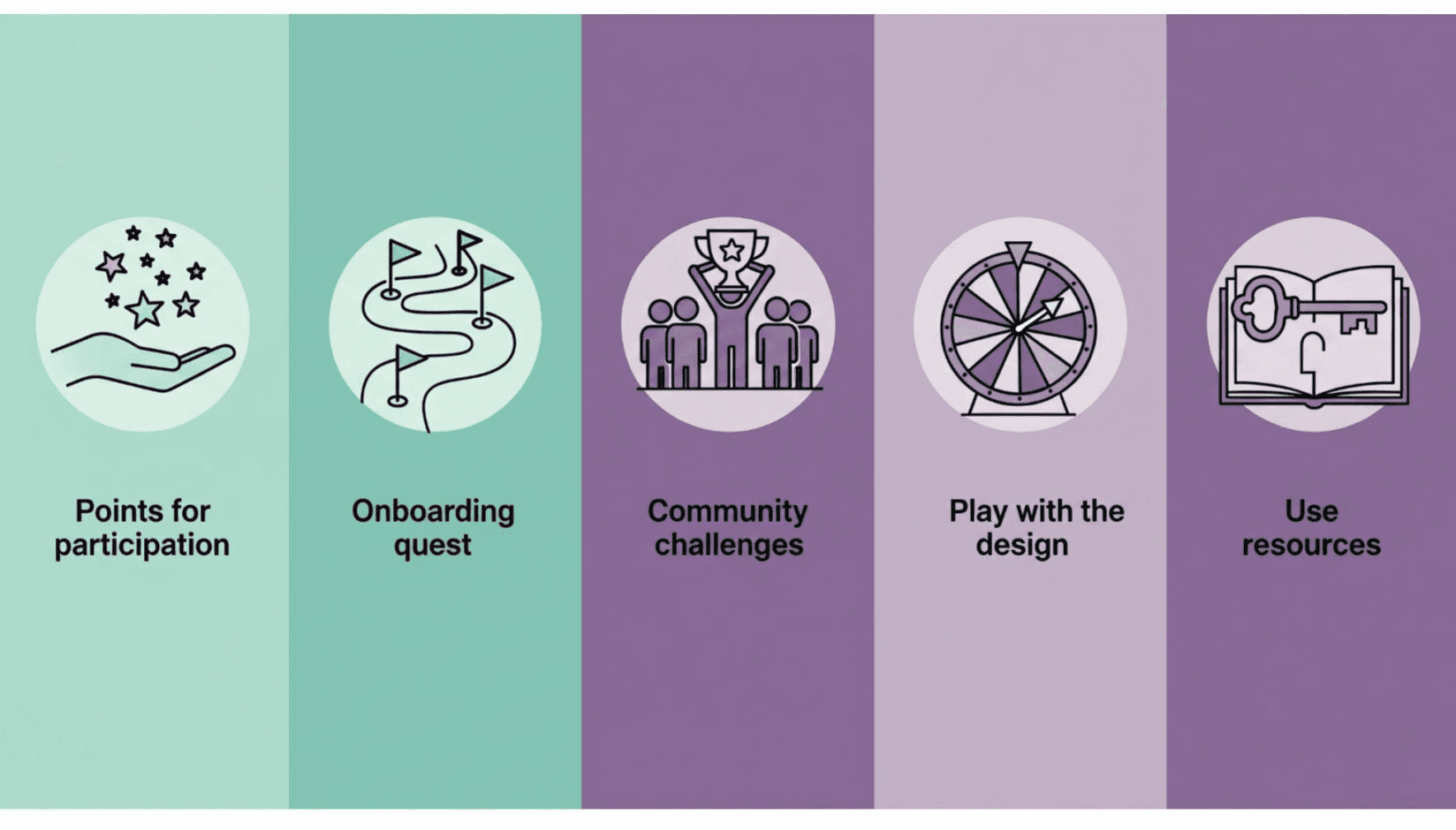Gamification—the use of challenges, rewards, and progress tracking to motivate behavior—isn’t new in the corporate world. In fact, many companies of all sizes use it to boost productivity and keep employees engaged.
But your coworking members aren’t employees. They’re freelancers, solopreneurs, or remote teams juggling multiple priorities. So, can gamification still work?
We asked a few other business owners who have employed gamification techniques to boost customer retention, and the general consensus is that, yes, it works. The secret is in understanding which methods to apply and why.
And this is what we’ll discuss in today’s piece. We’ll break it all down—from what works to what doesn’t, with real-world tactics and expert tips you can try today.
What gamification looks like in coworking spaces
You don’t need to turn your space into an arcade. In coworking environments, gamification is about adding light, motivating structure to everyday use.
You want to reward consistency, curiosity, and community involvement in a fun and engaging way. We asked Nicolas Breedlove, the CEO at PlaygroundEquipment.com, and his advice is to
“There’s not much of a difference between a playground and a coworking lounge when it comes to gamification. The space has to invite participation and tap into our natural love of play. Otherwise, it’s just background noise.”
Say you want members to use your space for every face-to-face meeting they have. To incentivize them, offer points every time a meeting room is booked. Once they reach a specific number of points (5, 10, or 20), give them a membership discount.
If the reward is worth the hassle and the offer is up to par, more members will use your coworking space for meetings instead of taking clients to restaurants or cafés.
For members who don’t use meeting rooms, you can implement digital punch cards that unlock rewards like free coffee, private room time, or guest passes.
Extra tip: To make things a bit more interesting, keep it low-tech with physical displays, QR codes, or even a physical punch card. It will be a fun distraction from your members’ overly digital lives.
Why it matters: benefits and potential
Gamification gives you a budget-friendly way to stand out in an already saturated market. A few simple mechanics, like points for attending events or rewards for referrals, can bring more customers your way and convince existing ones to use your space(s) more often.
Here are some of the benefits you stand to gain:

- Repeat visits and longer stays — When members know they’re earning something, they’re more likely to show up consistently and stay longer.
- Stronger community ties — Gamification can encourage members to interact more, which creates a stronger sense of community. This is not easy to achieve when you’re on your own.
- Increased use of underused services — Want more people to try your podcast room or attend workshops? Incentivize it. Gamification can shine a spotlight on what’s often ignored.
- Better onboarding — You can gamify the onboarding experience to help new folks feel more connected, faster.
Data tells us that employees see a 48% increase in engagement if their work experience is gamified. This increase stems from the fact that work feels more fun and interesting when there’s a clear sense of progress and (worthy) rewards feel within reach.
As Eric Do Couto, Head of Marketing at Visualping, said, “When people can see their progress, they’re more likely to keep going. We’re wired to chase completion. This is why it’s important to monitor the things you want to improve.”
When you apply gamification to customers, the dynamic shifts because you’re trying to create a fun and engaging user experience.
“Gamification encourages repeat behavior, deepens brand loyalty, and turns passive users into engaged community members who want to come back, level up, and share the experience with others. It’s a retention engine disguised as fun.” — Ian Gardner, Director of Sales and Business Development at Sigma Tax Pro.
When gamification doesn’t work
Nothing in this world is 100% guaranteed to work.
Here are a few cases when gamification may not work in a coworking environment:
- It feels like homework — If your members have to read a rulebook just to earn a coffee, you’ve already lost them. Complexity kills interest. Keep it simple, or it becomes noise.
- A one-size-fits-all approach — Not everyone is motivated by the same things. Some love public recognition, while others prefer private rewards. If the game doesn’t match your audience, it flops.
- It creates cliques — Leaderboards can accidentally highlight the same people over and over. That can alienate quieter members or newcomers who never stand a chance.
- You lost the plot — Gamification should support your space’s purpose, not distract from it. If people are chasing badges but not doing meaningful work, the system needs a reset.
The number one reason why we love games is that they’re fun. But what exactly makes them so fun? They tap into basic human drives (achievement, curiosity, competition, and reward) and give us clear goals, instant feedback, and a sense of progress.
This makes challenges feel exciting, and even small wins feel meaningful. Add in a bit of social interaction or friendly rivalry, and suddenly we’re hooked. This is why gamification works so well when it’s done right.
When gamification does work (tactics to implement today)
You don’t need an app, a dev team, or a gamification guru to get started. Some of the best engagement boosters are cheap, cheerful, and surprisingly effective.
When we asked Anna Zhang, Head of Marketing at U7BUY, what she thinks about gamification in the context of attracting more customers, she made it very clear:
“Keep it simple and fun. If it takes more than a minute to explain to new members, it’s probably too complicated. Try small ideas, see what your clients actually respond to, and build from there. The best systems are the ones that evolve naturally.”
Moving forward, we’ll analyze some of the most popular gamification techniques, with tips and tricks on how to apply them to a coworking space.

1. Points for participation
The concept: Reward the behavior you want more of, whether it’s checking in, attending events, making referrals, or booking underused rooms.
How it works:
- Members earn points for specific actions.
- Track points digitally (with third-party tools like Spacebring) or manually (with a sticker chart, for instance).
- Offer meaningful perks for a specific number of points. These could be a free day pass, room upgrades, membership discounts, or coffee credits.
Why it works: Point systems are the oldest trick in the game, and they are quite effective. The action of gathering points is simple and doesn’t ask members to do anything they weren’t already doing. They just have to be more consistent.
Generate recurring revenue and offer exceptional customer experience at your shared or coworking space
2. Turn onboarding into a quest
The concept: Transform your onboarding process from a boring tour around the facility into a fun, low-pressure challenge that gets new members exploring the space, meeting people, and feeling like they belong fast.
How it works:
- Create a short list of “starter missions” (e.g., book a room, find the coffee machine, introduce yourself to two people).
- Present it as a printed card, digital checklist, or QR-scanned journey.
- Offer a small reward for completion, such as a complimentary first day, half-price for the first meeting room booking, or free drinks for the day.
- Track completions and gather feedback to improve the experience.
Why it works: New members often feel awkward or overwhelmed. A guided onboarding quest can help them feel welcome right away. It also makes it easier to remember where everything is and who to ask for help (just in case).
Just make sure that you allow newcomers to opt out of this experience. Not everyone wants to do a quest on their first day in a new coworking space; some just want to bury their head in their laptop and get on with work.
3. Challenges that build communities
An authentic sense of community and belonging is a great way to get people noticing your brand. For instance, niche coworking spaces are quite popular because members like to be surrounded by people in a similar field or mindset.
The concept: It’s a way to show members that your coworking space is not just “a place with desks and Wi-Fi.” With members from different industries and backgrounds, you have to find ways to encourage collaboration, resource-sharing, and casual networking.
How it works:
- Members can earn points for attending events, helping others, or sharing resources. These points can be redeemed for small perks like coffee, sweets, or priority for the best spots/rooms.
- Design community challenges, such as: “Collectively log 100 coworking hours this week” or “Share 10 job leads this month.” Reward the winning group with treats or small celebrations.
- Use badges or newsletter shoutouts to recognize members who consistently attend events or host sessions.
Why it works: Most freelancers and entrepreneurs work solo. They don’t have coworkers to bounce ideas off or celebrate small wins with. Coworking communities can fill that gap and make them feel supported, seen, and connected.
4. Play with the design
Loyal members may say they like your strong and secure WiFi connection, but more often than not, they return for how the space makes them feel. Warm lighting, intentional furniture, art, a sense of privacy, and acoustics all contribute to a sense of belonging.
The concept: Install physical gamified elements (that are fun and visually appealing) throughout the coworking space to get members to interact with them or each other.
Tips to make it work:
- Have a physical spin wheel that lets members win small perks each day at check-in or check-out.
- Install whiteboards, wall charts, or digital screens that track community goals (e.g., hours worked, events attended, coffee consumed). Seeing progress fuels participation.
- Create “mission stations” where members can check in, collect stamps, or pick up weekly challenges (like a real-world game board).
- Place QR codes or clues around the space — under desks, behind plants, near coffee stations. Finding one unlocks a prize or a prompt to connect with someone new.
Why it works: Gamified design makes the environment feel alive and responsive. It invites exploration, encourages participation, and turns the space itself into a kind of game board.
5. Use resources to stay in the game
If your pricing strategy allows it, use high-value, exclusive resources to put your coworking space on the map as a hub for growth. Of course, this means more than fast Wi-Fi and a good coffee.
To really stand out, you must give members access to things they can’t easily get elsewhere, like:
- A curated resource library (templates, tools, industry reports)
- Possibility to connect with mentors, coaches, or peer advisory circles
- Access to useful tools, like a free website traffic checker or a social media monitoring platform
- Job boards, gig leads, or partner referrals
- Mini photo or podcast studios for content creation
Now, gamify it.
- Unlock resources as members hit certain milestones (e.g., 10 coworking visits = access to a private coaching session)
- Create tiers or levels for those who contribute to the community or attend events
- Run monthly challenges where winners gain premium perks (studio time, VIP desk access, or consulting hours)
Why it works: People who frequent coworking spaces often operate solo, without the support systems of traditional companies. Therefore, access to valuable resources combined with a hint of competition can be a powerful draw.
Wrap up
Gamification isn’t a must-have for running a coworking space, but it’s a smart way to stand out in a crowded market.
Cozy desks and good WiFi get people in the door, but thoughtful gamified experiences give them a reason to stay, engage, and even brag about your business. It’s especially appealing to high-end, independent professionals who value both productivity and a sense of community.
Done right, it turns routine tasks into rewarding moments and loyal members into your biggest advocates.






